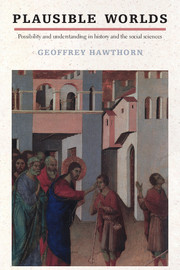5 - Explanation, understanding and theory
Published online by Cambridge University Press: 05 August 2012
Summary
Possibilities increase under explanation as they also decrease. The British Labour Party has depended on trade union support. It has also been constitutionally bound to take note of decisions taken at its conference and on its National Executive Committee. Could that constitution and the powers of the NEC have been modified? And whether they could have been or not, could the various elements in the Labour Party in the 1950s and 1960s have collaborated in a less mutually self-destructive manner? Some authorities in early modern Europe made effective moves to limit the spread and perhaps also the incidence of plague. Could they have acted earlier? And could other authorities have acted at all? The increasingly severe fiscal pressures on French agriculturalists in the seventeenth and early eighteenth centuries served to keep their fertility high. Could these pressures have been lower? And if they could, would other conditions have allowed fertility to fall? The new mood in Washington after Roosevelt's death, Harriman's advice to Truman, Stalin's decision to press his advantage in eastern Europe, and the seeming speed of the Soviet Army's advance into north Korea, all affected the State–War–Navy Coordinating Committee's view that the United States should occupy the south. Would that view have been different if Roosevelt had still been in power, or if Stalin had proceeded with more caution in Poland, or if his army had not moved so quickly into northern Korea, or if Washington had had a better sense of his general intentions?
Information
- Type
- Chapter
- Information
- Plausible WorldsPossibility and Understanding in History and the Social Sciences, pp. 157 - 188Publisher: Cambridge University PressPrint publication year: 1991
